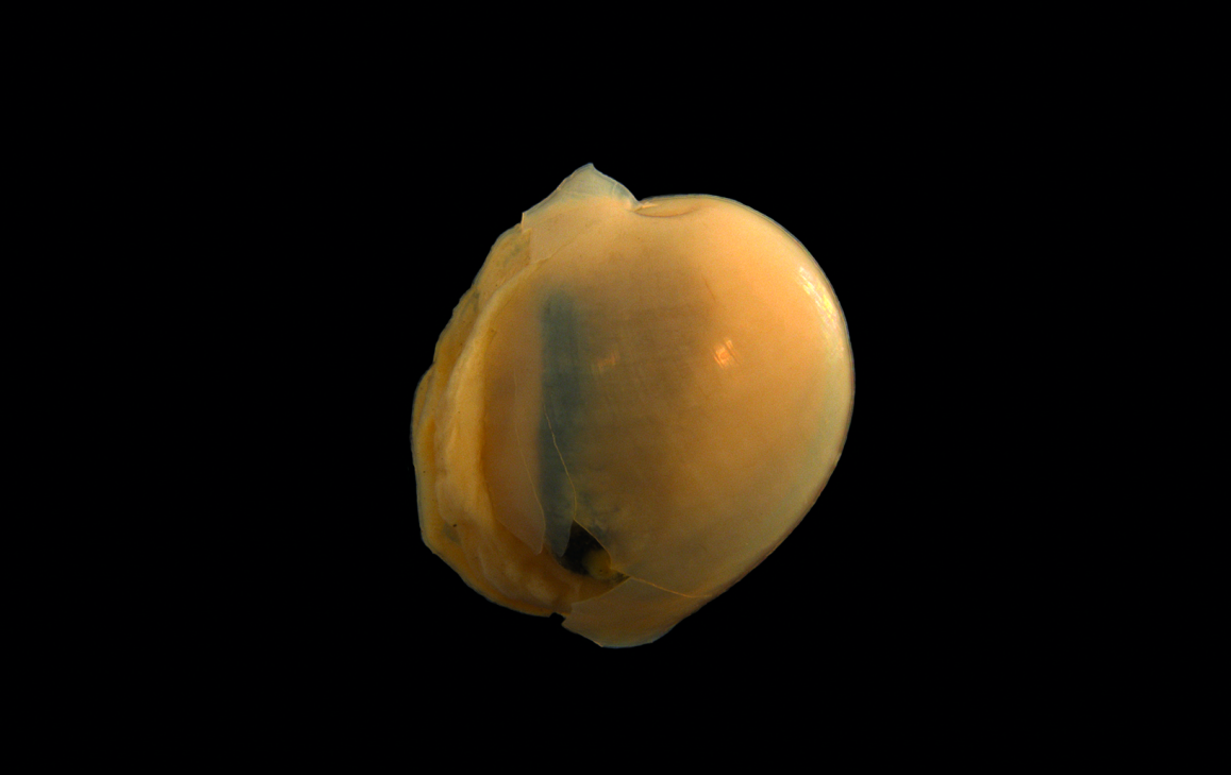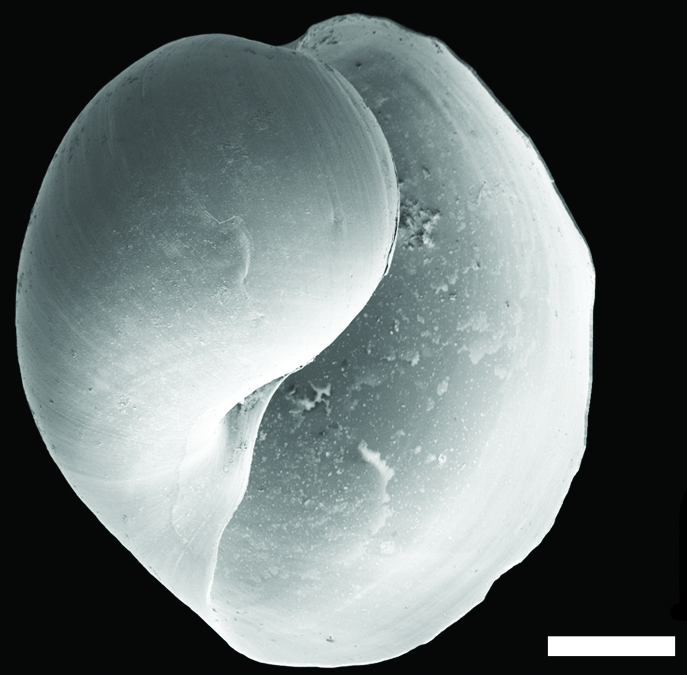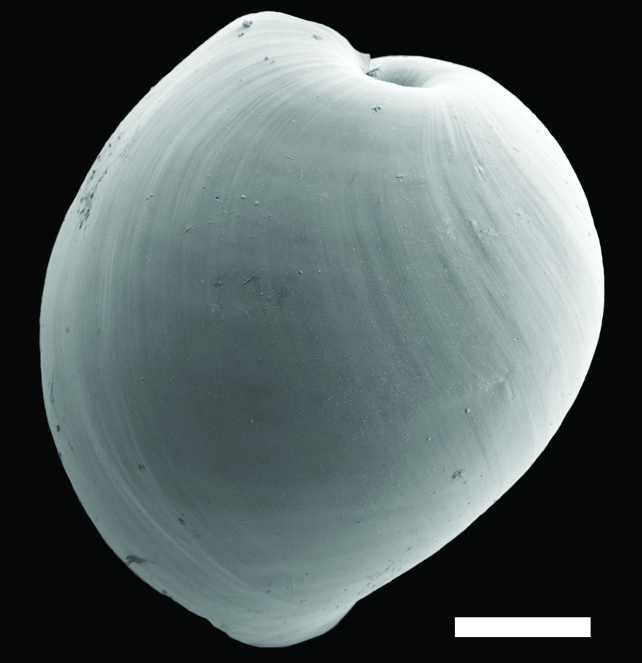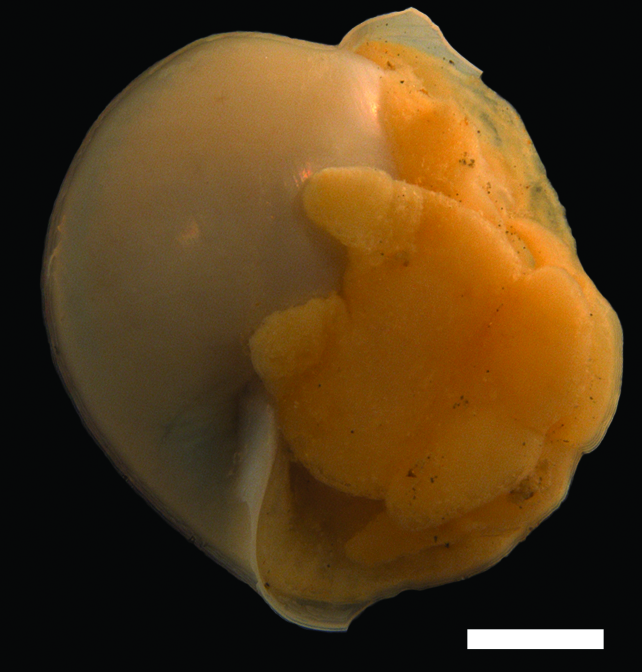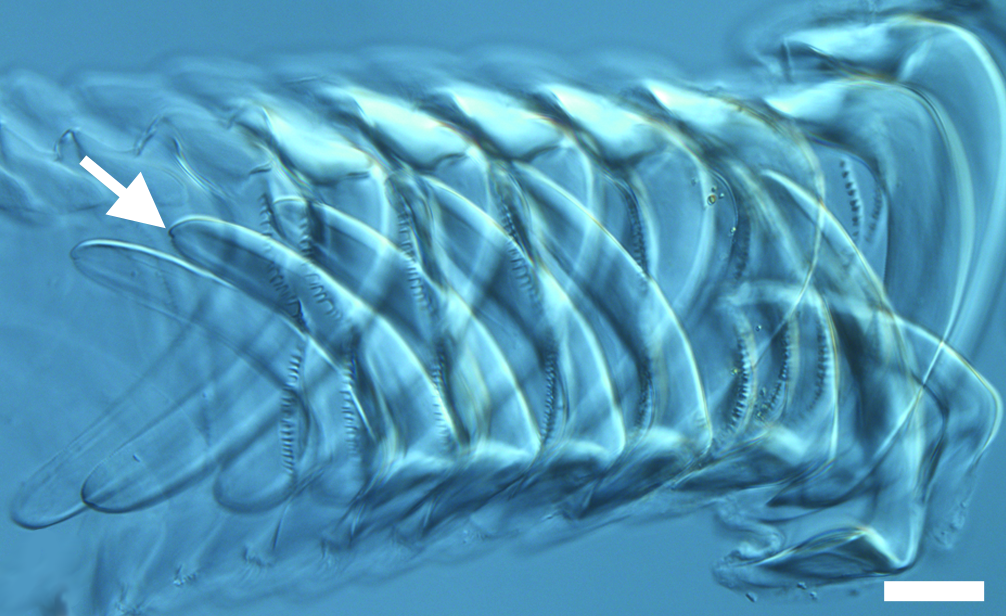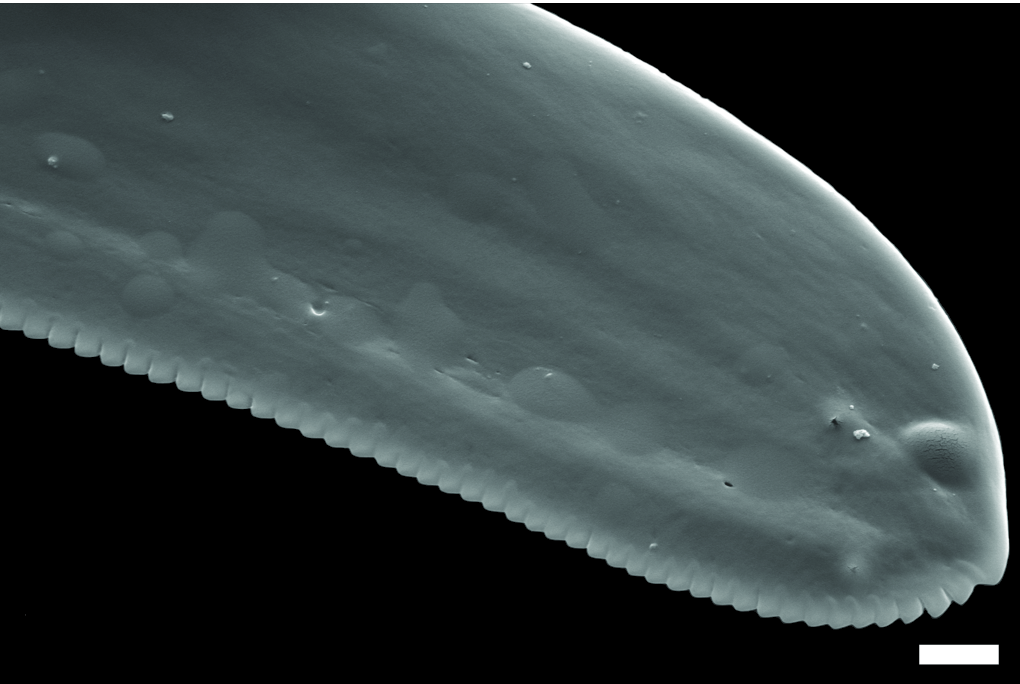Diaphana hiemalis
Shell description
The thin shell is external and transparent, usually with a globe-like shape. The opening is wide. The top of the shell (apex) is obscured by the whorls of the shell (involute). At the bottom of the shell an umbilicus is present. The shell surface is mostly smooth, but may have a pattern consisting of faint spiral lines. The length of the shell varies between 2–6.4 mm.
Animal description
The body is white in colour. The cephalic shield has two tentacle lobes in the hind part. The foot is forked in the hind part and lobed in the front.
Anatomy
The radula consists of 12–15 rows of teeth; with one inner lateral on each side and one central (rachidian) tooth. The outer lateral teeth are absent. The inner laterals are long and the inner edge carries denticles, the central tooth has two lobes separated by a gap and bears denticles. The radula is asymmetrical as the left laterals are slightly smaller than the right laterals and they have large denticles on the tips. The lobes of the central tooth are symmetrical. The male reproductive system consists of a long penis chamber that curves towards the top, where the prostate emerges at a straight angle in the form of a thin and one thicker branch.
Ecology
Occurs between 5–2725 m on mud, clay, sandy clay with stones, gravel, shells, foraminiferans, sand, muddy sand, silty sand, shell sand and mire. It is a characteristic species on clay bottoms below 400 m, and is most abundant between depths of 750–2000 m.
Geographical distribution
Occurs along the entire Norwegian coast, the continental slope, the Faroes-Shetland Channel and the Faroe Islands. This species is circumpolar, occurring as far apart as Japan and Massachusetts and maybe in the Mediterranean Sea.
References
Ohnheiser LT og Malaquias MAE (2014). The family Diaphanidae (Gastropoda: Heterobranchia: cephalaspidea) in Europe, with A redescription of the enigmatic species colobocephalus costellatus M. Sars, 1870. Zootaxa 6(3774): 501-522. http://zoobank.org/References/1C4C791C-09D7-4711-9D05-1ABE3DB24916 DOI: 10.11646/zootaxa.3774.6.1.
